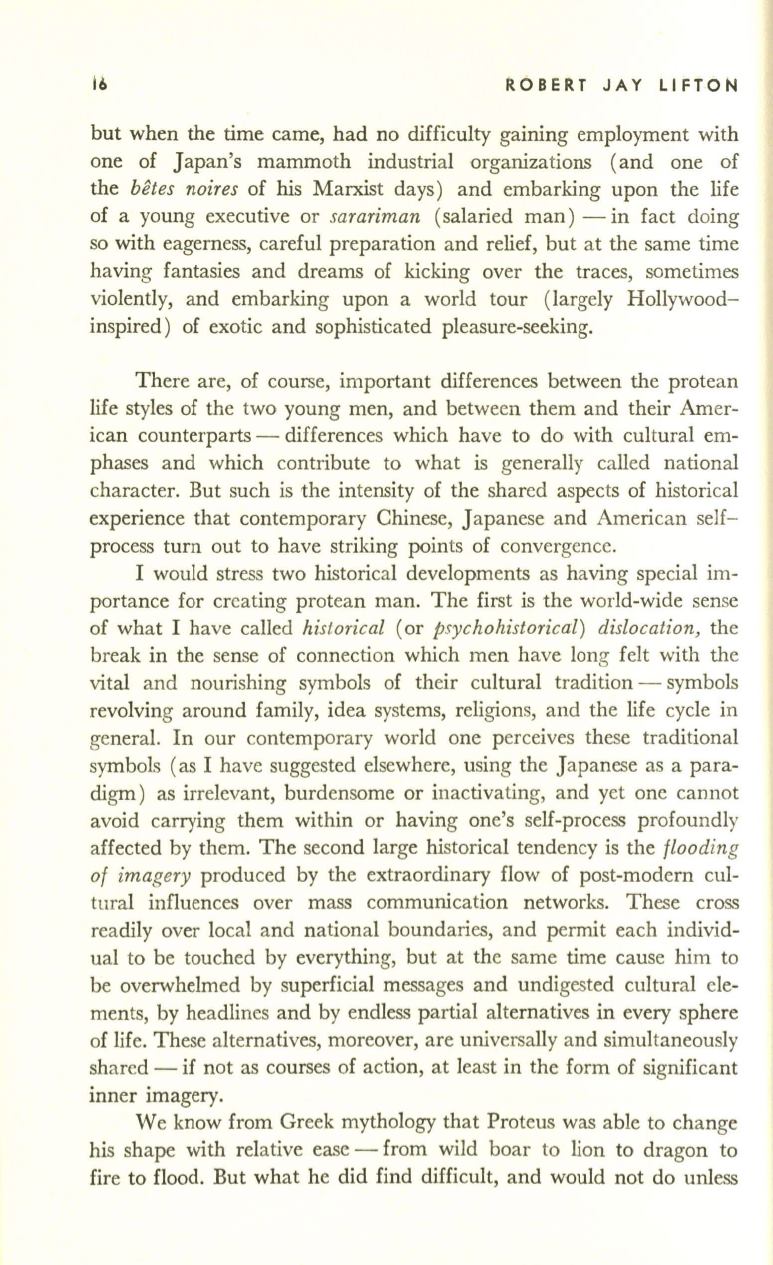
16
ROBERT
JAY
LIFTON
but when the time came, had no difficulty gaining employment with
one of Japan's mammoth industrial organizations (and one of
the
betes noires
of his Marxist days) and embarking upon the life
of a young executive or
sarariman
(salaried man) - in fact doing
so with eagerness, careful preparation and relief, but at the same time
having fantasies and dreams of kicking over the traces, sometimes
violently, and embarking upon a world tour (largely Hollywood–
inspired) of exotic and sophisticated pleasure-seeking.
There are, of course, important differences between the protean
life styles of the two young men, and between them and their Amer–
ican counterparts - differences which have to do with cultural em–
phases and which contribute to what is generally called national
character. But such is the intensity of the shared aspects of historical
experience that contemporary Chinese, Japanese and American se1£–
process tum out to have striking points of convergence.
I would stress two historical developments as having special im–
portance for creating protean man. The first is the world-wide sense
of what I have called
historical
(or
psychohistorical) dislocation,
the
break in the sense of connection which men have long felt with the
vital and nourishing symbols of their cultural tradition - symbols
revolving around family, idea systems, religions, and the life cycle in
general. In our contemporary world one perceives these traditional
symbols (as I have suggested elsewhere, using the Japanese as a para–
digm) as irrelevant, burdensome or inactivating, and yet one cannot
avoid carrying them within or having one's self-process profoundly
affected by them. The second large historical tendency is the
flooding
of imagery
produced by the extraordinary flow of post-modem cul–
tural influences over mass communication networks. These cross
readily over local and national boundaries, and permit each individ–
ual to be touched by everything, but at the same time cause him to
be overwhelmed by superficial messages and undigested cultural ele–
ments, by headlines and by endless partial alternatives in every sphere
of life. These alternatives, moreover, are universally and simultaneously
shared - if not as courses of action, at least in the form of significant
inner imagery.
We know from Greek mythology that Proteus was able to change
his shape with relative ease - from wild boar to lion to dragon to
fire to flood. But what he did find difficult, and would not do unless


